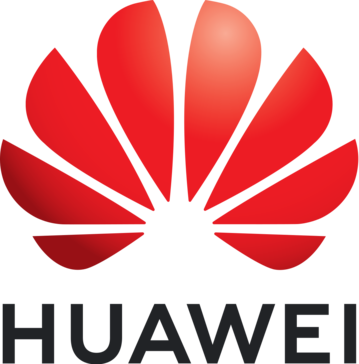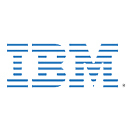Description

Kunpeng Devkit

IBM Semeru Runtimes
Comprehensive Overview: Kunpeng Devkit vs IBM Semeru Runtimes
Kunpeng Devkit
a) Primary Functions and Target Markets
Primary Functions: Kunpeng Devkit is a set of tools designed to optimize software applications for hardware based on the Kunpeng architecture developed by Huawei. Its main functions include:
- Compilers and libraries optimized for the Kunpeng processors.
- Profiling and debugging tools to enhance performance on Kunpeng hardware.
- Porting assistance for applications to transition them from x86 to ARM architecture, specifically the Kunpeng processors.
Target Markets:
- Developers and enterprises looking to optimize their applications for Huawei's Kunpeng processors, which are ARM-based.
- Industries where high-performance computing and efficient power usage are crucial, such as data centers, telecommunications, and cloud service providers.
b) Market Share and User Base
Kunpeng Devkit is part of Huawei's broader push into the ARM server market, competing against established x86 server architectures. Its market share is growing, especially in regions where Huawei has a significant presence, such as China. However, its global market share is relatively smaller compared to x86 dominates from Intel and AMD. The user base primarily includes enterprises leveraging Huawei's hardware solutions, especially in markets where local or regional mandates favor domestic technology companies.
IBM Semeru Runtimes
a) Primary Functions and Target Markets
Primary Functions: IBM Semeru Runtimes provide a set of Java runtimes based on the OpenJ9 JVM, which is an open-source Java virtual machine. Its main offerings include:
- Enhanced Java runtime environments with optimizations for cloud and on-premises environments.
- Performance improvements, memory footprint reductions, and quicker startup times for Java applications.
Target Markets:
- Enterprises using Java for large-scale applications, particularly those focusing on migrating workloads to cloud environments.
- Developers looking to improve the performance of Java applications across various platforms.
b) Market Share and User Base
IBM Semeru Runtimes are adopted widely within enterprises that utilize Java for mission-critical applications. While OpenJ9-based versions do not hold as large a share as Oracle's JVM, they are popular in scenarios where performance and resource optimization are key. The user base consists primarily of enterprises that are already part of IBM's ecosystem or those looking for alternatives to Oracle's licensing requirements for Java.
Key Differentiating Factors
-
Architecture Focus:
- Kunpeng Devkit is entirely focused on optimizing software for ARM architecture, specifically Huawei's Kunpeng processors.
- IBM Semeru Runtimes focus on Java applications, providing an optimized JVM that runs efficiently on both cloud and on-premises infrastructures.
-
Technology Stack:
- Kunpeng Devkit provides tools for a variety of programming languages and focuses on optimizing at the hardware level.
- IBM Semeru is focused on Java and provides a runtime environment that enhances Java application deployment and performance.
-
Market Penetration:
- Kunpeng targets a more hardware-specific audience, primarily those invested in Huawei’s hardware solutions.
- IBM Semeru has a broader appeal to businesses invested in Java, irrespective of specific hardware preferences, focusing more on software optimization.
-
Regional Influence:
- Kunpeng Devkit benefits from Huawei's strong presence in Asia, particularly in markets with government support.
- IBM Semeru has a global presence, benefiting from IBM’s established reputation in both software and services.
In summary, Kunpeng Devkit and IBM Semeru Runtimes cater to different needs within the enterprise technology landscape, with Kunpeng focused on hardware-specific optimization and IBM Semeru offering enhancements for Java runtime environments. Their differentiation lies in their focus areas, target markets, and to some extent, geographical influence.
Contact Info

Year founded :
Not Available
Not Available
Not Available
Not Available
Not Available

Year founded :
Not Available
Not Available
Not Available
Not Available
Not Available
Feature Similarity Breakdown: Kunpeng Devkit, IBM Semeru Runtimes
When comparing the Kunpeng Devkit and IBM Semeru Runtimes, both of which are tools in the realm of software development and runtime environments, it's important to understand how their features and functionalities align and differ. Here's a breakdown based on common industry analyses:
a) Core Features in Common
-
Cross-Platform Support:
- Both tools provide cross-platform support to enable development and execution across different hardware architectures.
-
Open Source Compatibility:
- Kunpeng Devkit and IBM Semeru both rely heavily on open-source components. IBM Semeru is derived from OpenJ9 and adheres to the OpenJDK standards, while Kunpeng Devkit supports integration with a range of open-source tools.
-
Performance Optimization:
- Each tool emphasizes performance optimization. IBM Semeru aims to optimize Java applications with tools and runtime efficiencies, while Kunpeng Devkit offers enhancements tailored to Huawei's Kunpeng processors.
-
Developer Productivity Tools:
- Both provide various tools to increase developer productivity like debugging, profiling, and performance monitoring utilities.
b) User Interface Comparison
-
Kunpeng Devkit: Typically offers a suite that integrates with existing IDEs (e.g., Eclipse), providing specific plug-ins tailored to improve the development process on Kunpeng hardware. Its interface is rather straightforward, prioritizing performance monitoring and optimization.
-
IBM Semeru Runtimes: Being a runtime, it doesn't have a heavy GUI but often integrates with existing Java IDEs and build tools seamlessly. Given its association with IBM, the overall experience is crafted for enterprise environments with an emphasis on ease of transition from other JDKs through command-line utilities.
c) Unique Features
Kunpeng Devkit:
- Hardware Specific Optimization Tools: Offers tools specifically designed for leveraging the capabilities of Kunpeng processors, like advanced compilers or libraries optimized for ARM architecture.
- Specific Processor Support: Designed to maximize the performance of software running on Huawei’s proprietary hardware.
IBM Semeru Runtimes:
- Eclipse OpenJ9 Integration: Optimized through the Eclipse OpenJ9 project, providing lower memory usage and faster startup times, setting it apart in environments with tight resource constraints.
- Seamless Transition Tools: Provides seamless transition and migration tools for enterprises moving from other Java implementations to the IBM Runtime.
In summary, while both tools share commonalities like cross-platform support and a focus on performance optimization, each carries unique attributes tailored to their core audiences: Kunpeng Devkit for Huawei hardware-specific solutions, and IBM Semeru for robust Java runtimes with enterprise-level optimizations.
Features

Development Tools
Performance Optimization
Compatibility

Security and Reliability
Cross-Platform Compatibility
Enhanced Performance
Best Fit Use Cases: Kunpeng Devkit, IBM Semeru Runtimes
Kunpeng Devkit
a) Best Fit Use Cases
Kunpeng Devkit is specifically designed to optimize software development for ARM-based architectures, particularly those utilizing Huawei's Kunpeng processors. It is suitable for:
-
Enterprise Applications on ARM: Organizations that are shifting from x86 to ARM architectures for cost-effectiveness and energy efficiency will find Kunpeng Devkit valuable for porting and optimizing applications.
-
Cloud Service Providers: Companies providing cloud services can use Kunpeng Devkit to optimize the performance of their cloud applications running on ARM-based hardware.
-
Telecommunications: This sector can benefit from Kunpeng Devkit when developing high-performance, scalable network applications tailored for ARM architectures.
-
High-Performance Computing (HPC): Projects that require intensive computational power can leverage the toolkit to fine-tune software for ARM-based hardware used in HPC environments.
-
IoT Solutions: Businesses developing applications for ARM-based IoT devices can utilize Kunpeng Devkit for performance optimization and energy efficiency.
IBM Semeru Runtimes
b) Preferred Use Cases
IBM Semeru Runtimes is a distribution of the OpenJDK, optimized for enterprise-level Java applications. It is ideal for:
-
Java-Based Enterprise Applications: Businesses running mission-critical Java applications who need reliable and optimized Java runtimes.
-
Cloud-Native Development: Organizations building containerized applications can utilize IBM Semeru Runtimes for enhanced performance and resource management in cloud environments.
-
Microservices Architecture: Enterprises adopting microservices can use Semeru to ensure efficient execution of Java-based services, with optimizations for low latency and high throughput.
-
Financial Services: This sector often runs high-frequency trading applications and other latency-sensitive operations that can benefit from the performance optimizations provided by IBM Semeru Runtimes.
-
Large-Scale Data Processing: Businesses engaged in data analytics, especially those dependent on Java-based tools like Apache Spark, can use Semeru Runtimes for improved execution efficiency.
d) Industry Verticals and Company Sizes
-
Kunpeng Devkit caters particularly to industry verticals that are already inclined toward ARM architecture, such as telecommunications, cloud computing, and IoT. It is more suited for medium to large enterprises that are either transitioning to ARM architectures or require optimizing existing ARM-based applications.
-
IBM Semeru Runtimes, on the other hand, is more versatile and caters to a wide range of industries including finance, telecommunications, retail, and more. It is suitable for businesses of all sizes—from startups developing new applications to large enterprises with legacy Java systems seeking performance improvements and scalability in cloud environments.
Both products offer tools and optimizations that align well with the strategic goals of their respective user bases, helping businesses adapt to their specific technological ecosystems and operational requirements.
Pricing

Pricing Not Available

Pricing Not Available
Metrics History
Metrics History
Comparing undefined across companies
Conclusion & Final Verdict: Kunpeng Devkit vs IBM Semeru Runtimes
To provide a conclusion and final verdict for Kunpeng Devkit and IBM Semeru Runtimes, it's important to analyze the features, performance, support, and potential use cases for each product.
Overall Value
Kunpeng Devkit:
- Designed to optimize software development for Huawei's Kunpeng processors.
- Offers tools like compilers, libraries, and utilities designed to leverage the Kunpeng architecture.
- Best suited for developers specifically targeting Kunpeng hardware, including industries where ARM architecture is predominant.
IBM Semeru Runtimes:
- A distribution of open-source Java runtime environments, including the OpenJ9 JVM, optimized for cloud environments and enterprise applications.
- Offers performance advantages like reduced memory footprint and quick start times, ideal for cloud deployments.
- Provides extended support options from IBM, valuable for businesses relying heavily on Java applications.
Verdict:
- IBM Semeru Runtimes offers the best overall value for enterprises that need robust Java support, especially in cloud environments, where performance and memory efficiency are crucial.
- Kunpeng Devkit provides better value for specific use cases within ARM-based computing, especially for developers standardizing on Huawei infrastructure.
Pros and Cons
Kunpeng Devkit:
-
Pros:
- Tailored for ARM-based Kunpeng processors, offering performance optimizations.
- Strong integration within Huawei's ecosystem, potentially delivering superior performance for compatible hardware.
- Access to a suite of development tools designed for specific hardware needs.
-
Cons:
- Limited appeal outside of ARM or Huawei-centric environments.
- May require investment in specific hardware, which could increase initial costs.
- Limited third-party support compared to broader development environments.
IBM Semeru Runtimes:
-
Pros:
- Broad compatibility with Java applications, supporting a wide range of platforms.
- Optimizations for cloud applications, resulting in better performance and reduced costs.
- Strong enterprise support and continuous updates from IBM, providing stability and reliability.
-
Cons:
- Might not deliver unique architecture-specific optimizations seen in ARM-specific tools like Kunpeng Devkit.
- Dependency on IBM for extended enterprise support, which could involve costs for premium services.
Recommendations
-
For Developers Targeting Specific Hardware:
- Choose Kunpeng Devkit if your projects are aligned with ARM architecture, particularly on Huawei's hardware. This environment will offer tailored optimizations and support tools designed to leverage the Kunpeng processors.
-
For Java-Focused Enterprises:
- IBM Semeru Runtimes is recommended if your organization relies heavily on Java applications, especially in cloud or hybrid environments. The optimizations for performance, memory efficiency, and robust support from IBM make it ideal for such use cases.
-
Consider Hybrid Environments:
- If your environment includes both Java applications and ARM-based hardware, aligning your development efforts and deployment strategies to complement both solutions can maximize investments in technology infrastructure.
In summary, the choice between Kunpeng Devkit and IBM Semeru Runtimes largely depends on specific hardware considerations and the business's predominant software technology stack. Each product has its strengths and strategic fit, making understanding your unique requirements critical in decision-making.
Add to compare



